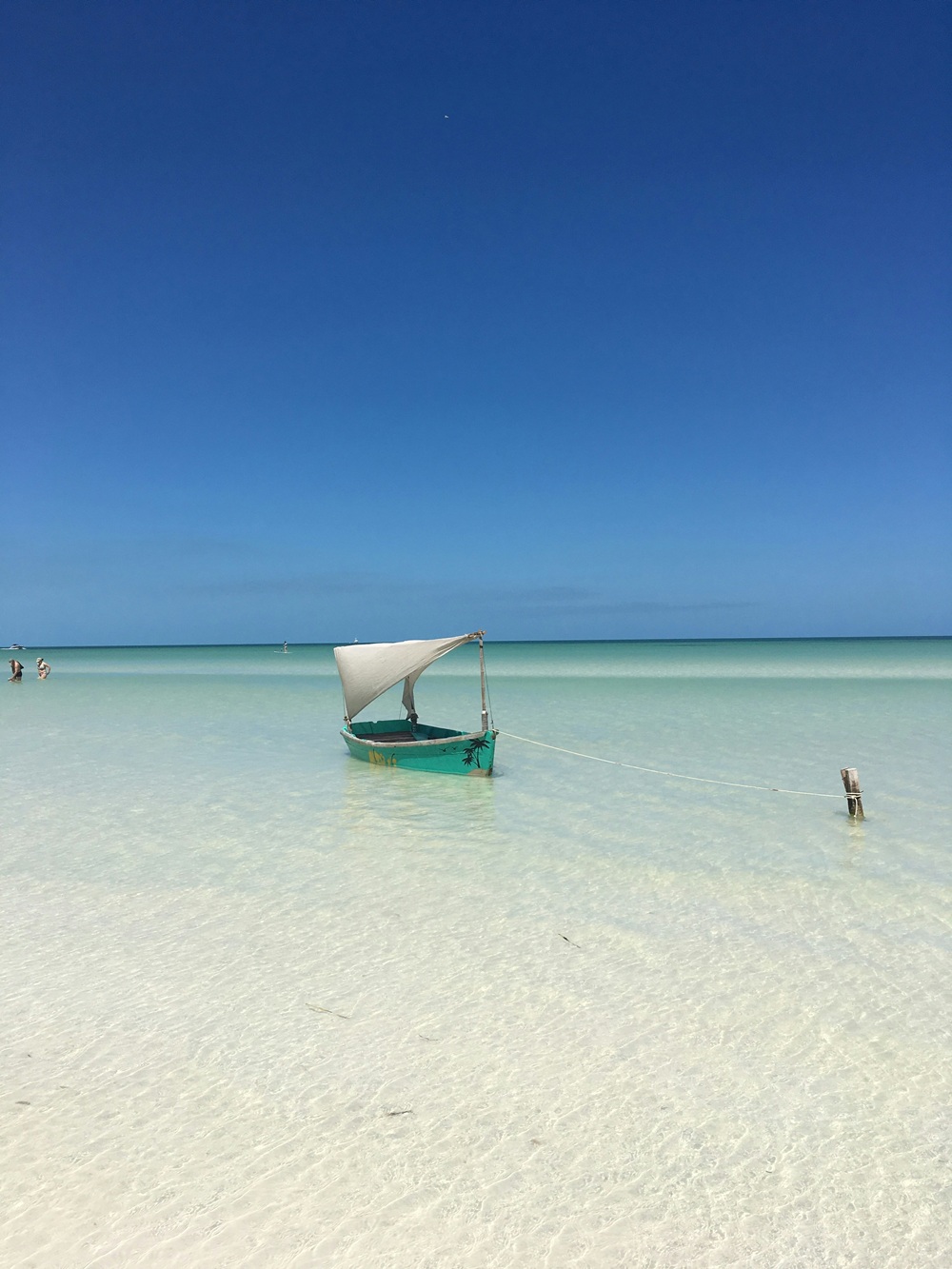Isla Holbox
Holbox (pronounced “HOLE-bosh”) is a car-free island off the northern tip of the Yucatán Peninsula, where sandy streets, pastel sunsets, and pelicans drifting over shallow turquoise flats set a slow, beach-town mood. It’s famous for whale shark encounters in season and occasional bioluminescence that turns night waves electric blue.
Why Go
- Shallow, calm water: Wide sandbars and warm, glassy shallows perfect for wading and SUP.
- Wildlife: Whale sharks (seasonal), flamingos in nearby lagoons, frigatebirds, and pelicans.
- Laid-back vibe: Golf carts and bikes instead of cars, hammocks over the water, and mural-covered lanes.
Top Things to Do
- Whale Shark Tour (seasonal): Typically May–September (often peaking June–August). Snorkel respectfully with licensed operators; no touching, keep distance, and follow guide instructions.
- Bioluminescence Hunt: On dark, moonless nights, join a guide or walk to low-light beaches to see glowing plankton swirl around your feet.
- Punta Mosquito Sandbars: Wade for ages over knee-deep turquoise; mind tides and protected zones.
- Three-Islands Boat Trip: Typically Isla Pájaros (bird nesting area—no landing), Isla Pasión, and Yalahau spring on the mainland.
- Bikes & Golf Carts: Cruise sandy lanes to beach clubs, murals, and long empty stretches of coast.
- Kiteboarding: Steady breezes and shallow flats make great beginner conditions with local schools.
When to Visit
Dry season (Nov–Apr) = sunnier days and easier sand street riding. Whale sharks (May–Sep) draw peak-season visitors. Summer can bring heat and occasional storms; check forecasts during peak hurricane months.
Beaches & Nature Notes
- Sandbars & shallows: Expect long tidal flats; bring water shoes for shells and hot sand.
- Sargassum: Holbox often sees less than some Caribbean-facing beaches, but it varies—conditions change week to week.
- Bird areas: Flamingos and nesting sites sit in protected zones—obey signs and keep distance.
Getting There
Drive or bus to Chiquilá, then take the ferry (≈20–25 min) to Holbox. On-island, use taxis (golf carts), rental carts, or bikes. Streets are sandy—after rain, expect puddles.
What to Bring
- Sun protection: Wide-brim hat, UV shirt, sunglasses, reef-safe sunscreen.
- Water shoes and dry bag for sandbar walks and boat days.
- Insect repellent: Useful around mangroves at dusk.
- Cash: For small shops, beach clubs, and tips (ATMs can run low).
Eco Etiquette
- Wildlife first: No drones near birds; keep distance from flamingos and nests.
- Whale shark rules: Licensed guides only; no touching, no flash, stay behind the animal.
- Leave no trace: Pack out trash; avoid trampling dunes and seagrass.
Where to Stay & Eat
From boho boutique hotels to casual guesthouses, most stays sit a short walk from the beach. Expect fresh ceviche, seafood tacos, and tropical cocktails; beach clubs offer daybeds and shade with a minimum spend.
Photo Tips
- Golden & blue hours: Use long sandbars for leading lines; shoot silhouettes of birds at sunset.
- Night shots: For bioluminescence, pick moonless nights; high ISO and fast lenses help. Avoid disturbing wildlife.
- Keep it clean: Salt spray and sand are everywhere—carry a microfiber cloth and zip bag for gear.
If you’re after calm water, wide horizons, and a rhythm that encourages bare feet and bikes, Holbox is your slow-tropics sweet spot.


